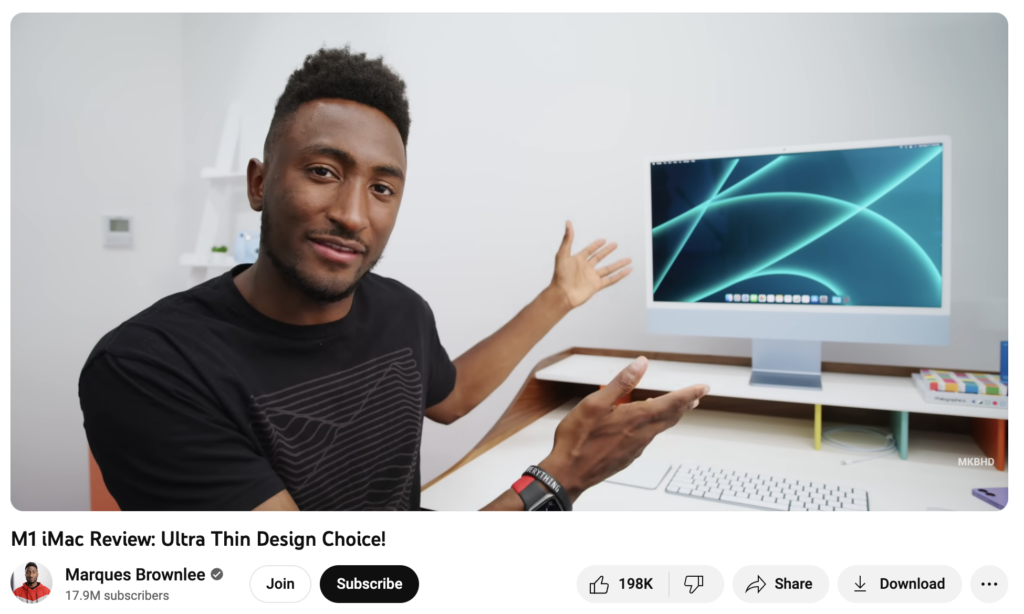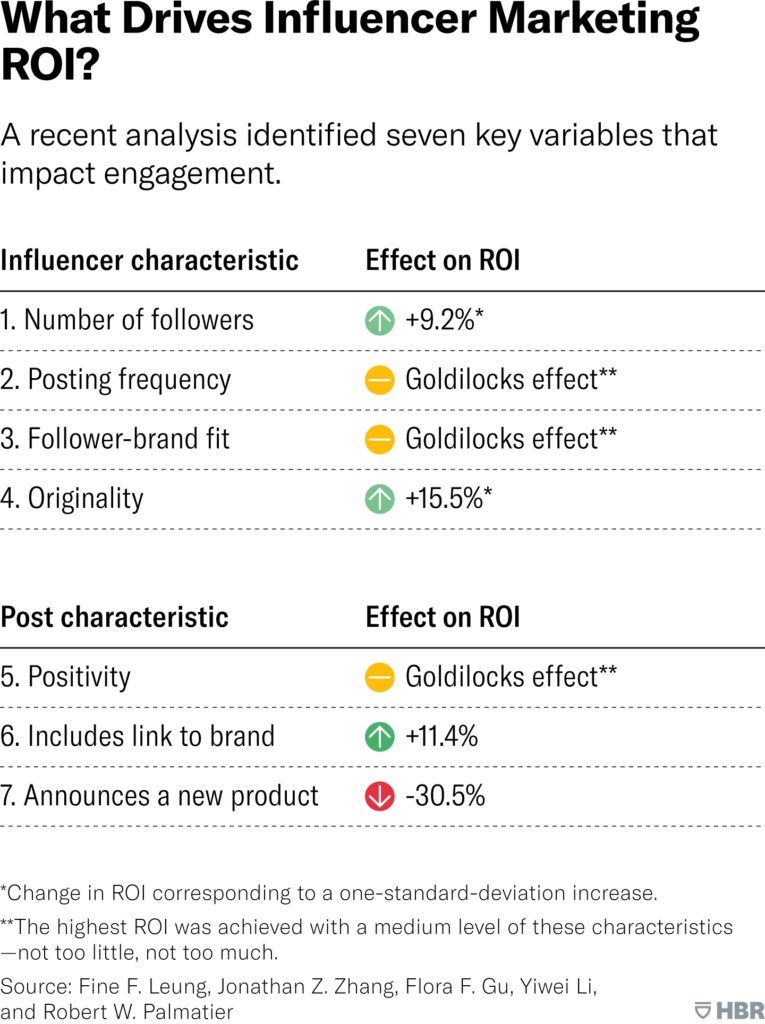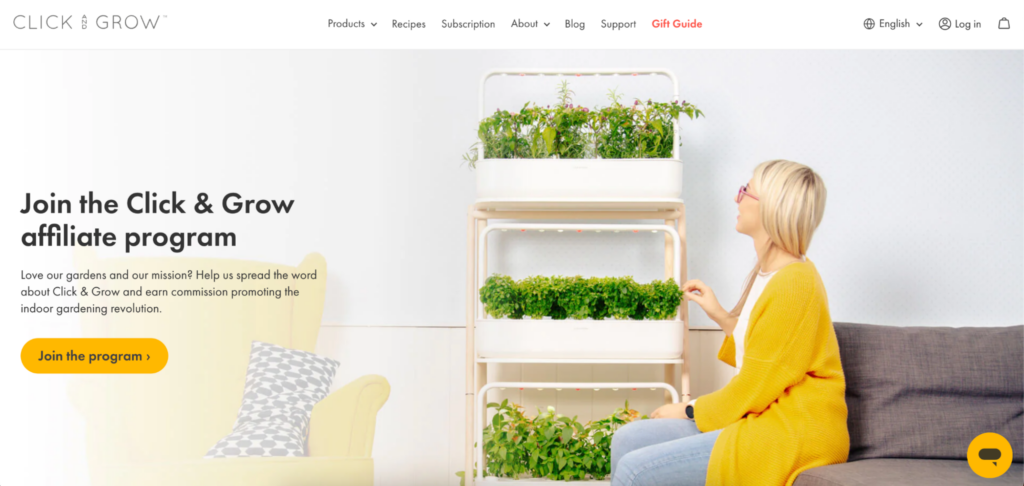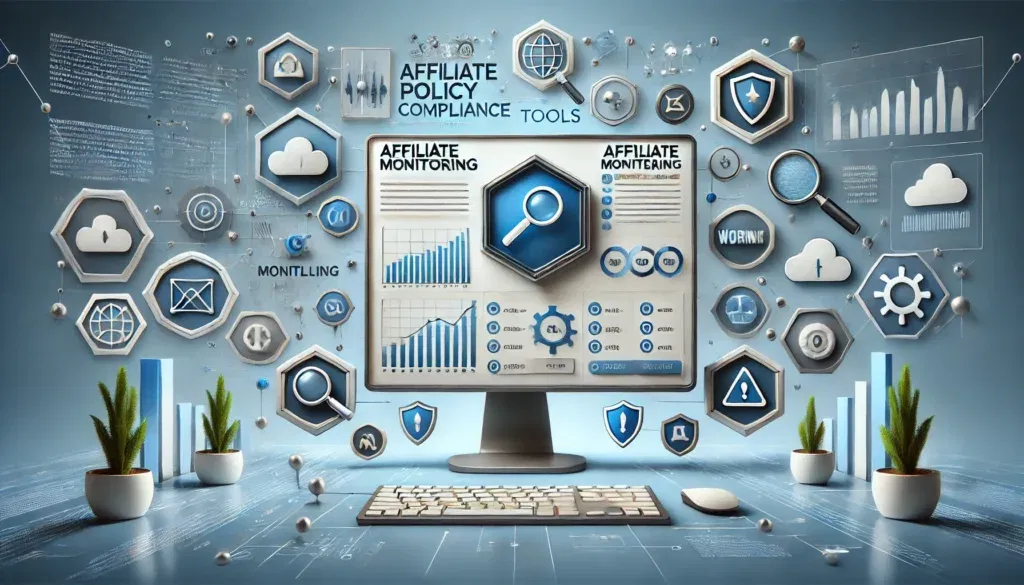While traditional ads serve a purpose, they will never generate the trust and community around your brand that influencer marketing can. Leveraging the power of authentic recommendations should be the main marketing strategy for companies in 2024.
Numerous businesses come to us in search of an affiliate program because they found that traditional advertisement wasn’t worth it anymore. The influencer marketing industry was valued at $21.1 billion in 2023, which is almost a 30% increase since last year. This jump reflects the increasing importance of influencer marketing as a growth strategy for companies.
A brief introduction to affiliate influencer marketing
At its core, affiliate influencer marketing is word of mouth on steroids. What sets this apart from traditional influencer marketing is the use of affiliate links. These are unique tracking links provided to influencers by companies, which the influencers use in all of their content – social media posts, blogs, or videos.
When their followers click on affiliate links and make purchases, the influencers earn a commission. This performance-based aspect ensures that companies are paying for effective conversions, making this a highly cost-efficient marketing strategy. Affiliate commission allows you to negotiate the price influencers usually charge for promotions, with the promise of creating a long-term passive income for them.
Companies are increasingly turning to affiliate influencer marketing as a vital tool for sustainable revenue growth.

Table of Contents
Advantages of Influencer Affiliate Marketing Over Traditional Advertising
Assuming that you are already determined to make influencer affiliate marketing work as a growth channel, here are additional reasons why your budget for it should be higher than what you are spending on traditional advertising.
Precise Targeting
Social media influencers, especially micro-influencers, have specific audiences. This allows brands to target their marketing efforts very precisely. Traditional advertising often casts a wider net and may not be as effective in reaching a particular audience demographic. With influencer marketing, companies can reach the right audience with a more tailored message.
Cost Efficiency and ROI
Traditional advertising can be expensive, involving costs for production, placement, and media buying. Social media influencer marketing can be more cost-effective, with a potentially higher ROI. Payments are often tied to performance, such as pay-per-click or commission on sales, which aligns costs directly with results.
Greater Engagement and Interaction
Influencers create content that resonates with their audience, leading to higher engagement rates. They often interact with their followers through comments, live sessions, and DMs, making the promotional content much more interactive than traditional advertising. This two-way communication builds a sense of community and loyalty around a brand.
Adaptable Marketing
The digital nature of influencer marketing allows for quick adjustments based on real-time feedback and analytics. Traditional advertising campaigns, once launched, are harder and more costly to change. They’re more difficult to experiment with and test different approaches. Influencer marketing’s flexibility is a significant advantage in rapidly changing markets. You can partner with several different influencers who have completely different niches and see which one performs best.
Multi-Channel Strategies
Social media influencers often have a presence across multiple social media platforms, allowing brands to amplify their reach across different channels. Traditional advertising is typically more confined to specific mediums like TV, radio, or print, and integrating across these channels can be more complex and expensive. Online content is easier to generate, track, and invest in.
Higher Relevance and Relatability
Influencers, being real people rather than corporate entities, can present products in a way that is more relatable to consumers. Their ability to incorporate products naturally into their daily life stories makes the promotion more relevant, generates social proof, and is less annoying than traditional ads.
Avoiding Ad Fatigue
With the increasing use of ad blockers and the general tendency of consumers to skip or ignore traditional ads, influencer marketing offers a way to bypass ad avoidance. Content created by influencers doesn’t feel like a conventional ad and is therefore more likely to be consumed and remembered.
Long-Term Brand Building
Influencer partnerships contribute to long-term brand building. Influencers who continuously engage with a brand can reinforce its values and messaging over time, creating lasting brand awareness.
Content Variety and Creativity
Influencers are content creators who bring their unique style to their promotions. This variety in content – from unboxing videos to tutorials, lifestyle photos, and storytelling – keeps the audience engaged and entertained, something that traditional advertising struggles to achieve consistently. Influencer-generated content will always be more persuasive and offer stronger social proof than traditional ads.

These benefits make influencer affiliate marketing a worthwhile investment for businesses looking to connect with their audience in a more authentic and effective way. The “State of Influencer Marketing 2023” by Marketing Hub shows that more than 80% of companies surveyed had a dedicated budget for influencer marketing in 2023, which is a significant increase from 37% in their first survey conducted in 2017.
In the same survey group, 67% of companies said they are planning to increase their influencer marketing spend, and 23% of respondents will allocate more than 40% of their entire marketing budget to influencer campaigns. It’s worth it!
How Much Do Companies Spend on Influencer Marketing?
While this might seem overwhelming at first, you only need a handful of influencers to start. In fact, 39% of brands surveyed have worked with 10 influencers or less to achieve results. The exact budget you should allocate depends on your current marketing budget and resources. 25% of brands worldwide put 10-20% of their marketing budget towards influencer marketing. Businesses reported an impressive ROI from influencer marketing campaigns, with an average return of $5.2 for every $1 spent.
You don’t need a big marketing team to dive into the influencer marketing industry – companies like Vivian Agency can build it from scratch, and you can continue running it in-house with just one marketing hire. Once your program is built, maintaining it shouldn’t require a big budget.
The Harvard Business Review also published a useful chart after analyzing social media posts by an international influencer marketing agency, outlining seven key variables that affect the ROI in influencer marketing.

The key takeaways from this chart about the influencer economy:
- Number of followers: Celebrity influencers with more followers tend to generate a higher ROI, with a 9.2% increase in ROI for every standard deviation increase in follower count.
- Posting frequency: There’s a “Goldilocks effect” where neither too much nor too little posting is optimal; a medium frequency is most effective.
- Ideal influencer-brand fit: Similar to posting frequency, the fit between an influencer’s followers and the brand should be just right.
- Originality: Highly original influencer content leads to a significant increase in ROI, with a 15.5% jump.
- Affiliate links: Posts that include a link to the brand see an 11.4% increase in ROI, highlighting the importance of easy access to the brand’s site or product page.
- New product announcement: Surprisingly, posts that announce a new product are associated with a 30.5% decrease in ROI, suggesting that influencer posts may be more effective for established products or services.
The overall message is that the most effective influencer marketing strategies are those that find the right balance in content and influencer characteristics, and provide direct, original, and appropriately positive promotions that resonate with an engaged audience.
Limitations of Influencer Marketing Compared to Traditional Advertising
While affiliate influencer marketing offers numerous advantages, it also has its limitations compared to traditional advertising.
- Dependence on individual influencers
One of the primary limitations of influencer marketing is its reliance on individuals outside of your company. The success of a campaign depends on the influencer’s reliability, consistency, and public perception. Any negative publicity or changes in an influencer’s reputation can directly impact the brands they are associated with. - Limited control over messaging
While influencers bring their unique style to content creation, this also means that brands have less control over how their products are presented. There’s always a risk that the influencer’s content or portrayal of your product may not align perfectly with the brand’s intended image or values. Similarly, if you send your product to an influencer to review, you have to be prepared for them to potentially dislike it. - Challenges in measuring ROI
Although affiliate links and promo codes can track sales, measuring the overall return on investment (ROI) of influencer marketing campaigns can be complex. Aspects like brand awareness and long-term customer loyalty are harder to quantify than with direct sales metrics. - Platform dependence
Influencer marketing is heavily reliant on social media platforms, which can be a double-edged sword. Changes in platform algorithms, policies, or popularity can greatly affect the reach and success of influencer campaigns. - Varying influencer rates and transparency
There is a wide variation in what influencers charge for their services, and these rates are not always transparent or consistent. This makes budgeting for campaigns challenging and may lead to uneven costs across different influencers. - Risk of inauthenticity
If an influencer promotes too many products or does not seem genuinely interested in what they are endorsing, their followers will know. This can harm both the influencer’s and the brand’s credibility. - Audience saturation and fatigue
Overexposure to influencer promotions can lead to audience fatigue. As more influencers promote various products, their followers might become desensitized to these endorsements, reducing their effectiveness over time.
These limitations highlight that, while influencer marketing can be a powerful tool, it requires careful strategy, selection of the right influencers, and an understanding of its downsides to be effective. Brands need to weigh these considerations against their marketing goals and the specific dynamics of their target market.
If you want to learn more about what is involved in building a successful affiliate program, check out this article!
Why Companies Choose Affiliate Influencer Marketing
Despite its limitations, the case for choosing affiliate influencer marketing over traditional advertising is strong. By leveraging influencers, companies can humanize their brand, build trust, and foster a community around their products or services. Moreover, the performance-based nature of affiliate marketing ensures a higher return on investment, as companies pay primarily for actual sales rather than potential exposure.
Case study insights vs. traditional advertising outcomes
Here are some of the results achieved through working with our clients on their influencer affiliate programs in comparison to traditional advertising.
#1: SafetyWing
Industry: Insurance-tech
- Influencer affiliate marketing: Achieved $350k per month in sales, with consistent growth since 2018, leveraging a partner program focusing on affiliate influencer marketing.
- Traditional advertising limitation: Would likely not have achieved the same depth of market penetration or monthly growth, lacking the personal connection and specific target audience engagement.
#2: Click & Grow
Industry: E-commerce
- Influencer affiliate marketing: Grew the program more than 3x in affiliates and 5x in revenue, reaching 129,916 EUR in sales. This was achieved by onboarding 122 active influencers in just two months, generating a steady flow of high-quality content.
- Traditional advertising limitation: Traditional methods might not have achieved such rapid and substantial growth in brand awareness and sales, given the lack of influencer-driven content and targeted outreach.

#3: PrepExpert
Industry: Education
- Influencer affiliate marketing: Generated over $337k in the first year, significantly growing the affiliate network and sales.
- Traditional advertising limitation: Traditional approaches may not have yielded such a substantial increase in sales and network growth due to less targeted and interactive strategies.
#4: One Way Fly
Industry: Travel & tourism
- Influencer affiliate marketing: Garnered $33,606 in revenue, focusing on brand placement within key travel communities in Asia.
- Traditional advertising limitation: Might not have effectively targeted or resonated with specific travel communities, potentially leading to lower revenue generation.
#5: Tactical Foodpack
Industry: Food industry
- Influencer affiliate marketing: Recorded sales of 9,848 EUR in less than a year by targeting relevant communities across Europe.
- Traditional advertising limitation: Might not have reached the same level of brand awareness and sales in targeted communities due to less personalized and community-focused outreach.
#6: Native Pet
Industry: Animal supplements
- Influencer affiliate marketing: Reached $10k monthly in sales by leveraging a network of influential content creators in the US pet industry.
- Traditional advertising limitation: Traditional methods may not have effectively captured the niche pet market and created a strong network of influencers, potentially resulting in lower sales.
#7: Resumeble
Industry: B2C Software
- Influencer affiliate marketing: Doubled sales within the first three months, reaching $22K monthly, by targeting young and mid-age professionals through a multi-target activation campaign.
- Traditional advertising limitation: Traditional methods may not have been as effective in quickly doubling sales and reaching the targeted audience.
#8: Xolo
Industry: Software
- Influencer affiliate marketing: Built a network of 146 active affiliates in the first year, focusing on a win-win strategy for affiliates and brand.
- Traditional advertising limitation: May not have built such a robust network rapidly, lacking the personalized and strategic approach of influencer marketing.

The personalized approach, targeted audience engagement, and ability to create authentic connections are key differentiators that make influencer affiliate marketing better than traditional ads. They simply can’t be replicated.
Combining Influencer Affiliate Marketing with Traditional Advertising
You should always test numerous marketing strategies instead of relying on one. Our case is not to entirely abandon traditional advertising; but to shift from prioritizing it as the only viable option for increasing brand awareness and visibility, to treating it as just one of the marketing strategies you will run in 2024.
Consumer Experience
The consumer’s journey from awareness to purchase can be more effectively navigated by combining these two strategies. Traditional advertising can introduce a broad audience to a product or brand, while influencer affiliate marketing can provide the detailed, personal endorsement that nudges consumers towards a purchase.
Maximized Brand Visibility
By leveraging both traditional and influencer marketing channels, companies can maximize their brand visibility across different platforms. This approach increases the likelihood of consumers remembering your brand when making purchasing decisions.
Product Messaging
A well-integrated strategy that includes both traditional and influencer affiliate marketing allows for a clear marketing message. This helps with consistency in brand messaging while allowing for the flexibility to adapt and personalize content for different audiences.
Balanced Risk and ROI
While traditional advertising often requires a significant upfront investment with variable returns, influencer marketing is typically more performance-based. This balance can lead to a more sustainable and cost-effective marketing strategy.
Influencer Affiliate Marketing is Just as Powerful as Traditional Advertising
Influencer affiliate marketing is not just a complement to traditional advertising; it’s a powerhouse on its own. Its ability to create genuine connections with audiences through trusted influencers gives it a unique edge. Above all, consumers value authenticity and personalization. Influencer marketing can be equally, if not more, effective than traditional methods in certain contexts.

As mentioned, influencer affiliate marketing works best in unison with other digital marketing strategies. By integrating influencer marketing with SEO, content marketing, and social media marketing, you can create a unified and powerful digital marketing ecosystem that leverages the strengths of each strategy. This integration can increase the reach and effectiveness of your marketing efforts.The affiliate program will play into other avenues such as:
SEO: Influencers can amplify your SEO efforts by creating blog posts that include targeted keywords and phrases. Their content, especially when posted on their own sites or social media channels, can generate valuable backlinks to your website, enhancing your backlink profile and potentially improving search rankings.
Content marketing: Collaborate with influencers to produce authentic and engaging content that aligns with your brand’s content marketing strategy. Influencers can bring a fresh voice to your campaigns and add credibility through their endorsement on social platforms.
Social media channels: Influencers are inherently skilled at navigating social media platforms and can boost your social media presence by increasing reach, engagement, and followers. They can create platform-specific content that resonates with their audience, which in turn can be leveraged across your brand’s channels for a consistent message.
And yes, it works well with traditional ads, too! The synergy between influencer affiliate marketing and traditional advertising can lead to a more dynamic and effective marketing strategy. While traditional advertising remains a critical component of brand promotion, influencer affiliate marketing has risen to become equally powerful.
Affiliate influencer marketing offers a dynamic, effective, and authentic way to connect with consumers. While it may not entirely replace some aspects of traditional advertising, its unique advantages make it an important part of a marketing strategy. Companies looking to stay ahead of the curve should consider integrating affiliate influencer marketing as soon as possible.
If you’re interested in building an affiliate influencer program in your company, let’s chat and see how we can make it happen.



